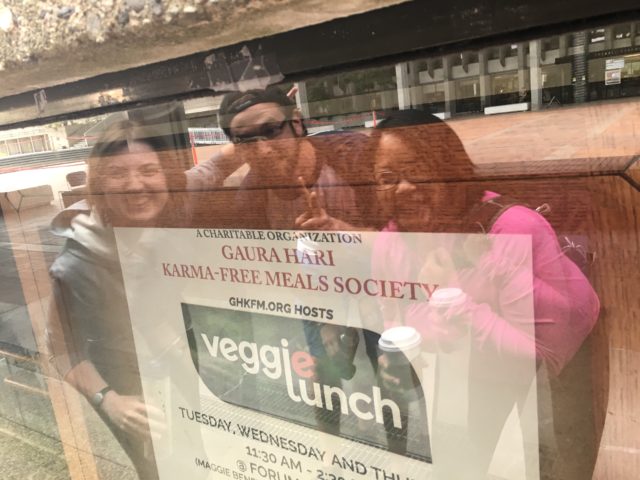My Big Aha

EDUC454D100 SUMMATIVE REFLECTION
I will admit… that teaching “Quantitative Approaches to Environmental Education” was not my area of expertise or course that I had initially applied to for the 2017 Summer Session. When I was offered EDUC454 to teach, I had a moment of hesitation because my subject specialty was Secondary Mathematics Education… and Curriculum Development as my next area of interest. I had agreed to teach EDUC454 but was uncertain how I would approach the course. So, I asked a few of my colleague friends who teach science on how they would teach the course, then I templated my expertise and pedagogical preferences to the course.
I wanted to include the intentions of BC’s New Curriculum to this course as well as engage in inquiry as learners. I have a core belief, based on my research, that you have to experience/learn what it’s like to teach what you are about to teach. Ideally, this would occur prior to teaching something or you can be so bold as to do it concurrently. I wanted the students to engage in Level 4 of inquiry as learners so that they can transfer what they had experienced and learned into their teaching practice. Furthermore, I wanted them to engage in cooperative group teaching facilitations to experience/learn what it would to be like to collaborate with others and teach.
I took some risks in this course. I learned that I had to get Ethics Approval to implement an inquiry project within my own course at the university. I learned that my lack of subject speciality really, really showed when I selected articles to read months in advance to the course (there was little room to deviate) and my students would have preferred articles written within the last 5 years. I learned that group facilitations were diverse in topic, depth, and breath even though every group had the same parameters of including environmental education, quantitative approaches, their subject specialty, and going outside. Finally, I learned that this class is equally diverse, they are critical thinkers, and they are pretty good at math.
My biggest aha from teaching and learning from EDUC454 is that I want to be outside. Embedding environmental education into my practice is not difficult to do and it can take on may roles, meaning it could be the setting, it could be the learning resource, or it could be part of the inquiry. There were many times that I wanted to implement some of the ideas presented during this course as part of my Math 8-12 classes if I was back or still in the classroom. I did not realize this until we had one class (Week 9) when we were inside the whole time. I walked away from the class feeling flat. Teaching and learning outside is possible regardless of what subject we teach… in addition to incorporating mathematics or quantitative approaches.
I am honing my practice to include and honour personalized learning, competency based assessments, and student-led learning. These three aspects were foreign to my former teaching practice as a secondary mathematics teacher, but having the opportunity to play, experiment, and learn with my students in EDUC454 made me realize the potential and power of BC’s New Curriculum and how we can engage students in their own learning so that it’s meaningful, purposeful, and joyful. It’s been an incredible teaching and learning experience. I look forward to the next few weeks left with them. We will be doing two classes of Philosophy Presentations (aka. IGNITE) and our last class with a field trip to Stanley Park with Candace Campo.
My goal right now is to figure out how we can go outside during our class in the next couple of weeks while facilitating the Philosophy Presentations. I am committed to going outside and wonder if going outside for the sake of going outside is enough. I have considered @perfinker’s (Gillian Judson’s) Walking Curriculum, but I don’t want to be disruptive or tangental either. We are approaching the end of the course and hope to bring our learning to a close by the end of the month. Thank you EDUC454 for the learning and helping me see that environmental education is cross-curricular.